With Earth Day taking place last Friday, support for environmental protection has been a recent focus both globally, as well as within advertising. While environmentally themed ads represent a small percentage of the thousands of advertisements we see each day, those that are done right can have a lasting impact and can bring about real change. Some environmental messages are too preachy, or try to make people feel guilty about their actions, and these ads turn off viewers. To find out what makes a successful environmentally themed ad, which can also help drive brand equity, we analyzed seven highly effective ads dating back to the 1970’s. Here’s how they rank and why they were strong performers.
#7: “Gas Powered Everything” – Nissan
Earning #7 is Nissan’s “Gas Powered Everything” from June, 2011. The ad for Nissan Leaf portrays a world where everything that requires energy (think computers, alarm clocks, microwaves, etc.) uses gas instead of electricity. Its dull colors represent the pollution that would permeate everyday life, and questions why, if we can use electricity to power our everyday needs and reduce pollution, the same can’t be done for cars. Nissan fires a direct shot at the Chevy Volt, which is a gas/electric hybrid, and encourages consumers to choose the all-electric option.
“Gas Powered Everything” received an overall Ace Score of 609, 10% above the Non-Luxury Auto Norm. Driven by Attention and Change, consumers appreciated the message of the ad, and the sentiment of reducing pollution from cars. The ad performed best with men aged 36-49, who gave it a 672 Ace Score.
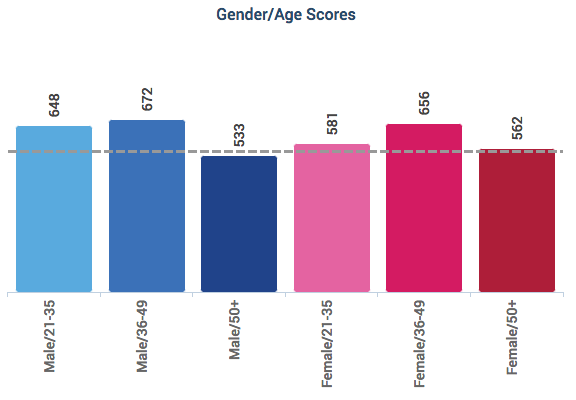
Interestingly, the ad also performed well above norm with people who are intending to purchase a vehicle in the next 7-12 months, suggesting that auto intenders are persuaded by the ad to consider an all-electric car.
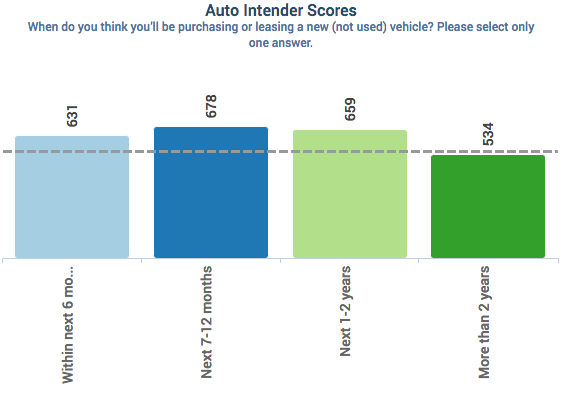
However, some consumers did question the ad’s message because of the fact that electricity can come from sources that pollute heavily, such as coal and natural gas burning power plants.

Despite this sentiment, “Gas Powered Everything” served as an effective wakeup call to the reality of a pollution filled world, and got consumers thinking about the environmental impacts of their purchasing decisions.


|
ad title |
brand |
category |
air date |
score(s) |
|
Gas Powered Everything |
Nissan |
Non-Luxury Auto |
06.09.2011 |
609 |
|
Clean Water |
Stella Artois |
Beer |
02.08.2016 |
630 |
#6: “Clean Water” – Stella Artois
At #6 is Stella Artois’ “Clean Water” ad, airing in February of this year. “Clean Water” brings to light an important environmental issue: shortages of clean water around the world. The ad represents a partnership between Water.org and Stella Artois, and vows to donate money for clean water in the developing world for each limited edition chalice purchased. Each donation helps to provide one person with five years of clean water.
“Clean Water” scored nearly 23% above the Beer category norm, receiving an overall Ace Score of 630. People were particularly drawn to the ad because of the Information communicated.
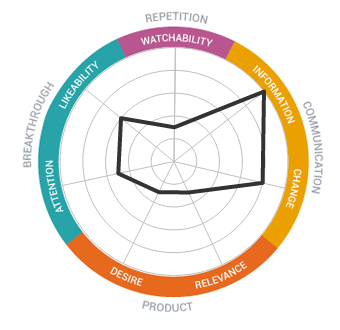
Being a beer company, Stella Artois succeeded in changing the way consumers view their brand, resulting in a high Change score. When consumers were asked what the single best thing about the ad was, 39% responded that it was the message.
In fact, in the viewer verbatim comments, viewers appreciated that Stella Artois was providing them a way that they could help people in the developing world, with 13% of respondents using the world “help.”
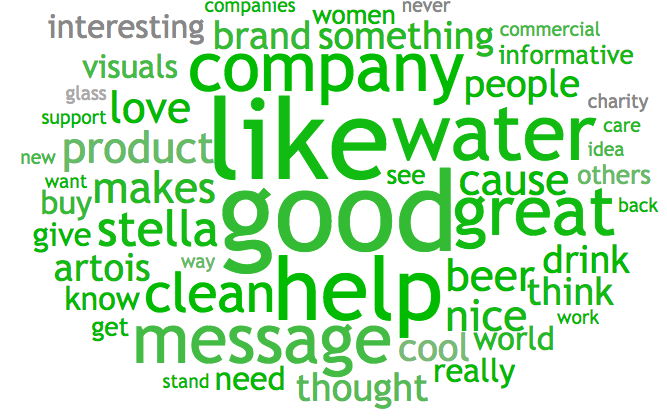
It is too early to tell whether Stella Artois will reach its goal of selling 90,000 chalices; however, with such strong ad performance, they have raised awareness and will likely help many people receive clean water.
#5 “#EveryDropCounts” – Colgate
At #5 on our list is Colgate’s 2016 Super Bowl ad, “#EveryDropCounts.” Originally airing in the fall of 2015, the ad was re-purposed in the television event with the largest reach and highest cost. Colgate chose this high-profile event to advertise for saving water, instead of directly promoting their products. In the ad, a man turns on the faucet to brush his teeth, and leaves it on. With no spoken audio, the ad flashes facts across the screen to inform viewers of how much water they waste, and why it’s a problem. Particularly interesting to this ad is the #everydropcounts, which encourages people across all social media sites to use the hashtag to not only promote and extend the reach of the campaign, but to also pledge water saving strategies from individuals who view the ad.
“#EveryDropCounts” scored a 667 overall Ace Score, with women aged 36-49 awarding it the highest score (730). The ad broke through the clutter with strong Attention, while also driven by Information and Relevance, as consumers learned just how much water they waste by leaving the faucet on while brushing their teeth.
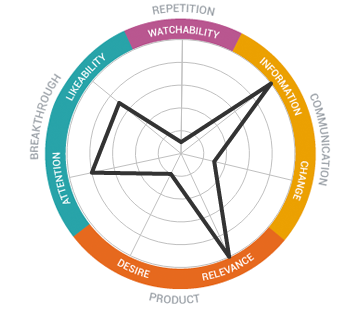
An overwhelming 56% of viewers said that the single best thing about the ad was the message. Additionally, consumers were moved the environmentally themed ad, using emotional words like “powerful”, “love” and “important” in their verbatim responses.
For Colgate’s first Super Bowl ad, they did an outstanding job, not only producing a relevant and informative ad, but also bringing an important environmental issue to light and encouraging people to turn off the tap. The key to their success was choosing a cause people agreed with that was directly linked to their product.
|
ad title |
brand |
category |
air date |
score(s) |
|
#EveryDropCounts |
Colgate |
Dental |
02.07.2016 |
667 |
|
Arctic Home |
Coca-Cola |
Soda |
11.06.2011 |
682 |
#4 “Arctic Home” – Coca Cola
#4 goes to Coca Cola’s “Arctic Home” ad, which originally aired in November, 2011. This ad introduces another environmental problem: the melting of the Arctic, which is displacing polar bears. The ad represents a partnership between Coke and World Wildlife Fund, where the proceeds from white Coke cans were be donated to WWF in hopes of creating a refuge for polar bears. With stunning visual scenes and adorable polar bears (that consumers have connected to the Coke brand for some time), the ad appeals to the viewer’s emotional side, encouraging them to care about these magnificent creatures.
The ad scored extremely well, achieving an overall Ace Score of 682, nearly 23% above the Soda category norm. With high component scores across the board, “Arctic Home” received a particularly high Information score of 734, suggesting that viewers not only appreciated the new information that the ad shared about polar bears, but also appreciated the information that Coke is supporting the polar bears.
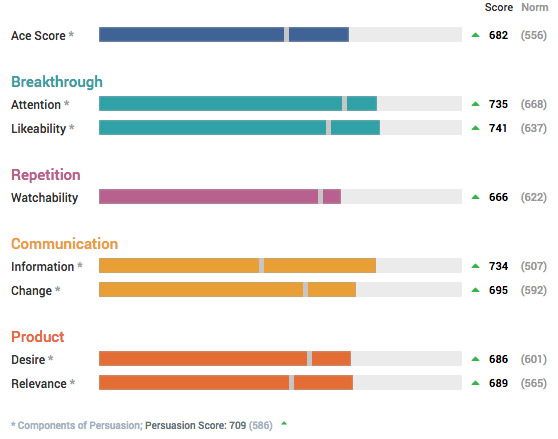
Interestingly, women found the ad more effective than men, with females aged 16-20 scoring the ad highest (729.) Among this group, words like “cute”, “awesome”, “sad” and “wonderful” were used at high rates, indicating that the cuteness of the polar bears, combined with the powerful message, moved this younger demo.
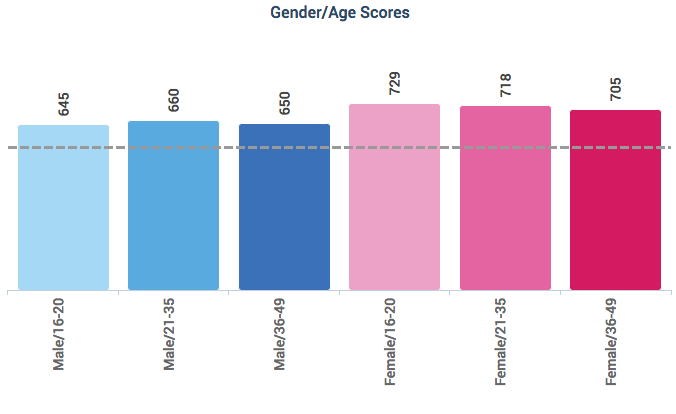 These viewer comments demonstrate how these types of ads can go a long way in driving brand equity as well as awareness:
These viewer comments demonstrate how these types of ads can go a long way in driving brand equity as well as awareness:



After just 5 months of the “Arctic Home” campaign, Coca-Cola raised more than $2 million for polar bears, which will be donated to WWF and go toward their $10 million goal of creating a refuge for polar bears. Coca-Cola continues its support of polar bears today.
#3 “Dawn Saves the Wildlife” – Dawn
The third highest scoring environmental ad we studied is Dawn’s “Dawn Saves the Wildlife”, created for Earth Day 2010, and coincidentally, aired just 13 days after BP’s oil spill in the Gulf of Mexico. Regarded as the worst oil spill in U.S. history, an estimated 4.9 million barrels of oil seeped into the Gulf. The area, which is home to over 8,000 species of marine life, was left with thick oil that continues to affect these organisms today. Dawn unintentionally capitalized on BP’s spill, not only promoting themselves as an environmentally conscious company, but also showing how their product can be used to clean oil off of birds and other marine animals.
“Dawn Saves the Wildlife” earned an overall Ace Score of 699. While third on the list in terms of overall score, this ad scored the highest out of all seven ads in the Likeability component, earning a 780 Likeability score.
The adorable birds featured in the ad likely helped drive performance, in addition to Dawn’s commitment to donating $1 to save wildlife from every bottle of Dawn sold. The ad clearly struck an emotional chord, with words like “cute” and “adorable” used heavily, in addition to “heartwarming”, “sad”, and “touching.” Word of admiration such as “great”, “love” and “nice” also appeared often in viewer comments, indicating viewers held the brand in higher esteem after seeing this ad.
The ad was more effective among women than men (Ace Score 710 vs. 685), particularly those aged 21-35 and 36-49. It is these Millennials and Gen X’ers who tend to care deeply about the environment and support companies that do their part.
Once again, animals prove to be a driving factor behind highly likeable ads. This, along with an environmental message that links extremely well with their product, helped Dawn in addition to the ingenious, albeit accidental, timing.
|
ad title |
brand |
category |
air date |
score(s) |
|
Dawn Saves The Wildlife |
Dawn |
Cleaners |
04.07.2010 |
699 |
|
The Crying Indian |
Ad Council |
PSA |
04.22.1971 |
704 |
#2 “The Crying Indian” – Keep America Beautiful
Our second strongest performer is Keep America Beautiful’s “The Crying Indian” ad that debuted on Earth Day in 1971. The ad features Native American actor Iron Eyes Cody shedding a tear after canoeing on a river and seeing pollution. The ad brought pollution (mainly littering at this time) to the attention of the American public, and urged them to stop.
“Crying Indian” was tested with 2014 consumers, and was just as effective as it was in 1971. The ad came back with an overall Ace Score of 704, nearly 30% above the Corporate Branding norm.
As the Ad Personality below illustrates, Relevance and Likeability drove the ad, making this a timeless campaign, as it remains relevant even 43 years after it originally aired. People appreciated the message of the ad, with 46% saying it was the best thing about it.
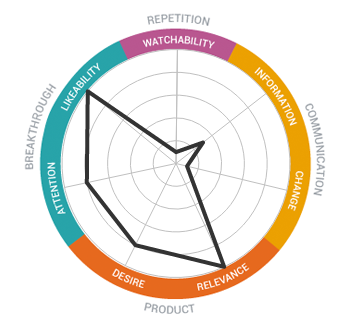
This ad is the only among our list that does not connect directly to a product (a PSA from the Ad Council), and consumer verbatims describe the appreciation for an environmental ad that doesn’t have an ulterior motive, just simply urging consumers to stop polluting for the environment’s sake.
Viewers with children scored the ad highest, awarding it an Ace Score of 732, suggesting that parents are particularly concerned about the way in which the environment is left for future generations.
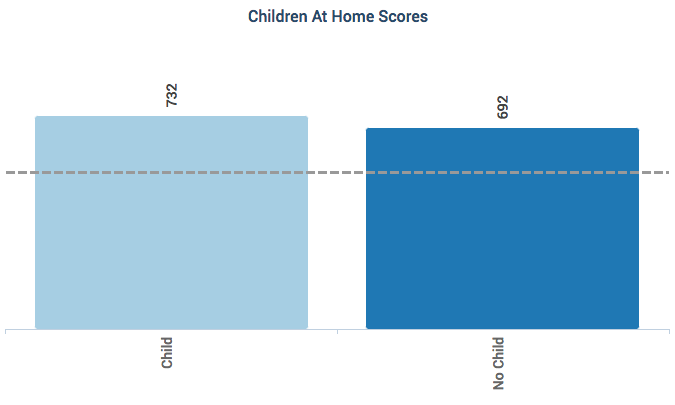
In similar fashion as the other ads we’ve discussed, the Ad Council spot makes a strong emotional connection with viewers. In addition to “great” and “love” being used excessively in viewer comments, “beautiful”, “powerful”, and “sad” appear with high frequency.
“The Crying Indian” is even considered one of the top 100 advertising campaigns of the 20th century by Ad Age Magazine. Beyond its advertising success, the powerful ad actually motivated people to do something about littering – after the ad aired, litter was reduced by 88% in 38 different states, making it one of the most effective environmental campaigns in history. It is proof that great creative, that connects emotionally with viewers, does not wear out.
#1 “Bring Back the Bees” – Cheerios
|
ad title |
brand |
category |
air date |
score(s) |
|
Bring Back the Bees |
Cheerios |
Cereals |
03.30.2016 |
743 |
The top performer of the environmentally-themed ads we analyzed is Cheerio’s “Bring Back the Bees”, a digital spot that debuted on March 30, 2016. The ad features humans helping a variety of animals, and ends with the plea for humans to help the bees. The ad is chilling, and does a superb job of identifying the problem, reminding people it is in our nature to help, and encouraging action.
“Bring Back the Bees” received an overall Ace Score of 743, a score that makes “Bring Back the Bees” the single highest scoring ad ever to be tested by Ace Metrix. The ad not only earned the highest Ace Score out of the seven studied, but also topped this list for the highest component scores of Change, Attention, and Information. What’s additionally impressive about the ad is that it scored well above 700 on all components, with the exception of Watchability (which is likely due to the ad’s length but still well above norm).
“Bring Back the Bees” also received the lowest Polarity Score of any ad tested with 21, which represents low polarization/high agreement across viewers. The score puts this ad in the 2nd percentile of ads, meaning that 98% of ads are more polarizing to viewers. For the sake of comparison, all seven ads with the exception of Nissan’s “Gas Powered Everything”, are in the low polarization range (below 40.) Nissan’s spot has a Polarity Score of 53, likely due to the controversy over electric vehicles.
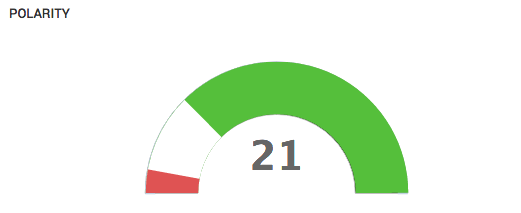
The ad was able to appeal to nearly everyone regardless of demographic, making it an all-around stand out.
The ad appeals to the viewer’s emotions, and many verbatim comments mentioned that the ad left them in tears or with chills. When asked what the single best thing about the ad was, viewers were torn between the message (37%) and the visual scenes (26%), as the two worked very well together in making viewers feel.




Additionally, “Bring Back the Bees” is an example of a true “Seek and Share” ad. “Seek and Share” refers to ads that have high Breakthrough scores, strong component scores, strong emotional connection, and high viewer agreement. These four pillars are common in ads that people actually seek out to watch again and to share with their friends and family.
This ad is sure to create some positive momentum in the effort to save the bees, and has already gone viral on social media, generating even more buzz for the bees.
Our analysis indicates that consumers are very receptive to environmental messages that are well done, with a strong link between the product and the cause without “selling” the product. Consumers want their brands to stand for something more. These ads create high levels of emotion through strong visuals and messages that link together, and promote very little disagreement among viewers. In this manner, the ads break through the clutter of messages consumers are bombarded with every day and do so to such great effect that viewers go on to “seek and share” these messages with their networks.
Congratulations to these caring companies and their creative teams!